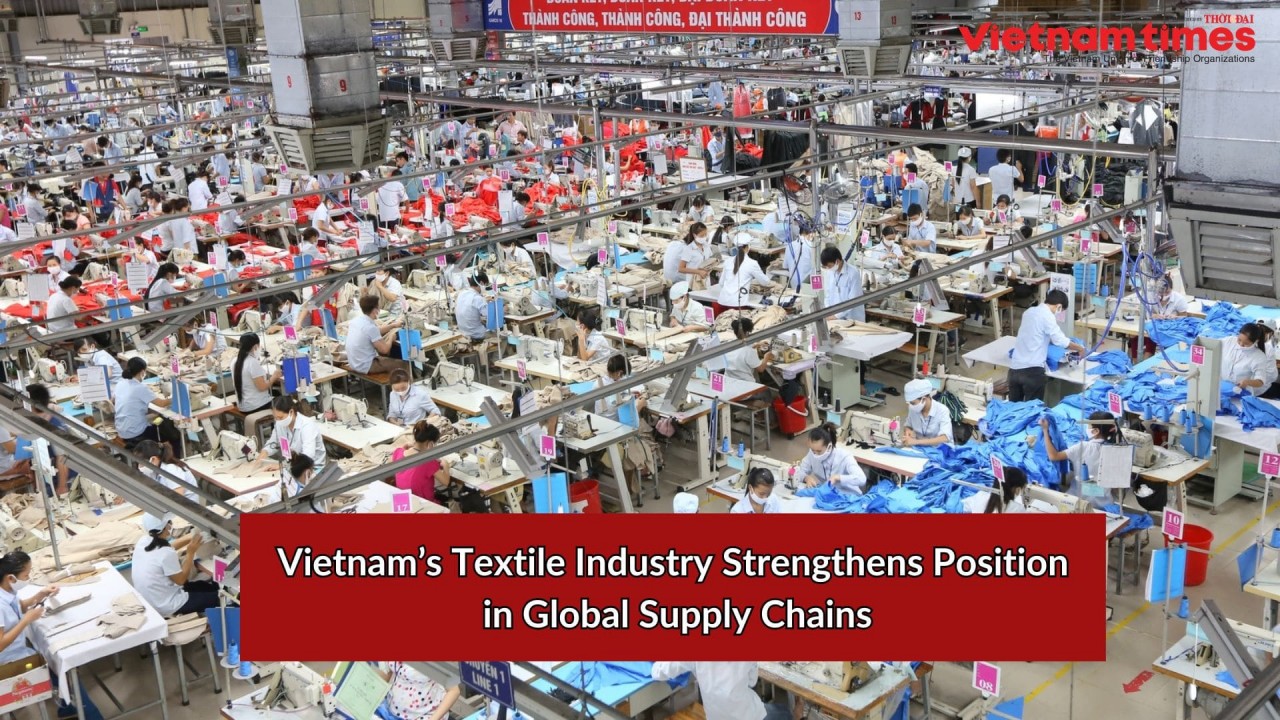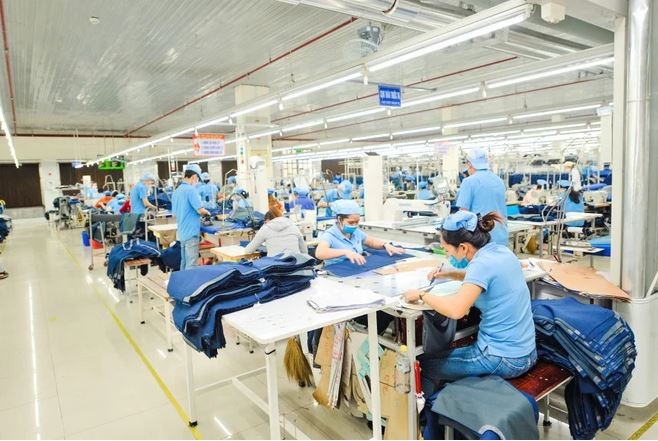Finding Solutions for Businesses to Effectively Leverage FTAs
| FTAs to Offer More Benefits for Vietnam | |
| Better Utilization of FTAs Brings 'New Vitality' to Vietnam - Chile Relations |
 |
| Textiles and garments are an industry that takes full advantage of FTAs. |
Industries Successfully Leveraging FTAs
As one of Vietnam's primary export sectors, the textile and garment industry has been making good use of the advantages provided by FTAs. According to Chairman of the Vietnam Textile and Apparel Association Vu Duc Giang, in the first 10 months of 2024, the textile and garment industry ranked fourth among the top export categories with a turnover of VND 30.572 trillion, a 10.5% increase compared to the same period last year.
Remarkably, export turnover to markets with FTAs has seen significant growth, with the CPTPP (Comprehensive and Progressive Agreement for Trans-Pacific Partnership) bloc alone accounting for approximately 16%.
“The CPTPP Agreement has shaped a globally integrated market. Since its enforcement, Vietnam's textile and garment industry has penetrated several CPTPP markets, especially South American countries, Canada, New Zealand, and Mexico—markets where we previously faced challenges. With the FTA in effect, we have made breakthroughs into these markets with outstanding growth,” shared Vu Duc Giang.
Textiles and garments remain one of Vietnam's key export categories, successfully leveraging FTA advantages. According to the latest report by the Ministry of Industry and Trade, in the past 10 months, Vietnam's largest markets have all been partners in bilateral and multilateral FTAs.
Specifically, export turnover to China was estimated at USD 50.8 billion, a slight increase of 2.1% compared to the same period last year; the EU market reached an estimated USD 42.3 billion, up 16.4% (compared to a 8.9% decline in the same period of 2023); South Korea was at USD 21 billion, up 6.9% (compared to a 3.6% decline in 2023); and Japan reached USD 20.1 billion, up 4.6% (compared to a 3% decline in 2023).
Although there have been some successes, exporting goods to FTA markets is not purely advantageous. For example, Australia, which has three FTAs with Vietnam - AANZFTA (ASEAN-Australia-New Zealand FTA), CPTPP, and RCEP—is considered one of the world’s most challenging markets, with high product quality standards and strict import processes.
Vietnam currently exports lychee, longan, dragon fruit, and passion fruit to Australia. However, this market imposes stringent technical barriers, labeling requirements, and food safety standards - often even higher than those in the US and EU. Additionally, Australia enforces numerous import regulations, such as tax policies, packaging and labeling rules, food safety standards, quarantine requirements, intellectual property rights, branding, and business practices. Given Australia’s robust domestic agriculture, Vietnamese exporters must prioritize product quality over price to enter this market.
In the CPTPP bloc, according to Tran Thu Quynh, Commercial Counselor of the Vietnam Trade Office in Canada, exporting processed and manufactured goods, including textiles, will become increasingly difficult. Challenges arise not only from declining markets but also from competition. Vietnamese goods are gradually losing tariff advantages under the CPTPP as Canada accelerates FTA agreements with South American and Indo-Pacific partners (e.g., Malaysia, India, Indonesia, and ASEAN-Canada agreements). These nations have similar product structures to Vietnam.
Furthermore, businesses face difficulties in tracing the origin of products to maximize FTA benefits.
 |
| The coffee industry is expected to benefit when the FTA ecosystem comes into existence. |
Removing Obstacles for Businesses
To fully capitalize on FTAs, the primary challenge for businesses is ensuring product traceability. The Vietnam Timber and Forest Product Association has urged enterprises to verify the legality of raw materials when exporting wood products. Additionally, Vietnamese companies must enhance accountability, ensuring that every material used in production is traceable and does not contribute to deforestation or forest degradation.
In recent years, the Vietnam Timber and Forest Product Association has conducted training courses for businesses on accountability practices. The association also runs awareness campaigns urging companies to strengthen governance capabilities. While FTAs provide opportunities, they also come with risks. Enterprises must thoroughly vet partners before signing contracts to avoid unnecessary risks.
From a governmental perspective, to address obstacles and help businesses maximize FTA benefits, Deputy Director of the Multilateral Trade Policy Department under the Ministry of Industry and Trade Ngo Chung Khanh, stated that the government has assigned the ministry to collaborate with other ministries, localities, and associations to establish an ecosystem for leveraging FTAs.
This ecosystem connects all stakeholders across the value chain. For example, in the seafood sector, it links aquaculture farmers, purchasing companies, processing firms, financial institutions, logistics providers, and relevant government agencies.
Initially, the ecosystem will focus on six industries: textiles, footwear, seafood, coffee, cinnamon, and cashews. The goal is to unify stakeholders to maximize their strengths, providing a focused approach to fully harness FTAs. The ecosystem is expected to be operational by September 2025, addressing existing issues and streamlining resources from ministries and associations for more effective FTA utilization.
 | Vietnam, New Zealand Coordinate to Exploit FTAs More Effectively Vietnam and New Zealand have an advantage of being two of the most integrated economies in the Indo-Pacific region along with some of the most ... |
 | New Generation FTAs Impacts on Digital Transformation and Policy Recommendations for Vietnam Digital transformation is an inevitable trend to improve production, business efficiency, and competitiveness. It contributes to achieving Vietnam's goal of creating a digital government, digital ... |







